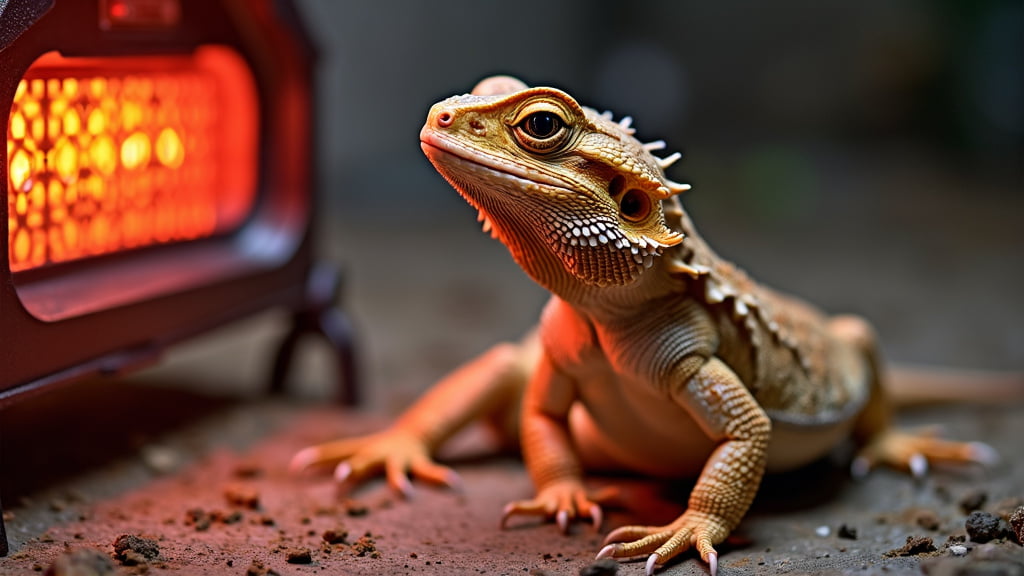Owning a bearded dragon can be an incredibly rewarding experience. With their unique personalities and fascinating behaviour, they can bring a lot of joy into your home. However, ensuring their habitat mimics their natural environment is crucial, and this includes providing the right heating. Heat lamps play a vital role in maintaining the health and well-being of your bearded dragon. But, how do you ensure that your heat lamp setup is safe? In this comprehensive guide, we’ll explore everything you need to know about heat lamp safety for bearded dragons.
The Importance of Proper Heating for Bearded Dragons
Bearded dragons are cold-blooded reptiles native to the deserts of Australia. In their natural habitat, they thrive in a warm and dry environment. To replicate this, you’ll need to provide a range of temperatures within their enclosure. The right heat lamp can help to create this thermal gradient, essential for their health and digestion.
Why Heat Lamps Are Essential
Heat lamps are crucial for:
- Thermoregulation: Enabling bearded dragons to regulate their body temperature.
- Metabolism and Digestion: Activating enzymes that aid in digestion.
- Behavioural Health: Encouraging natural behaviours such as basking.
Choosing the Right Heat Lamp
Not all heat lamps are created equal. The type of heat lamp you select can significantly impact your bearded dragon’s safety and health.
Types of Heat Lamps
There are several types of heat lamps available:
- Incandescent Heat Lamps: Commonly used due to their effectiveness and affordability.
- Ceramic Heat Emitters: Provide heat without light, useful for nighttime heating.
- Mercury Vapour Bulbs: Offer both heat and UVB, essential for calcium absorption.
Long-tail keywords: “best heat lamp for bearded dragons,” “ceramic heat emitters for reptiles,” “reptile heat lamps safety.”
Factors to Consider
When selecting a heat lamp:
- Wattage: Choose a lamp with the appropriate wattage for your enclosure size.
- UVB Output: Ensure your heat lamp or separate UVB lamp provides adequate UVB rays.
- Temperature Control: Utilize thermostats to maintain consistent temperature ranges.
Installing and Maintaining Your Heat Lamp
Correct installation and maintenance of your heat lamp setup are critical to prevent accidents and injuries.
Proper Placement
Incorrect placement of a heat lamp can lead to burns or insufficient heating:
- Height and Angle: Position the lamp at an appropriate height to prevent burns but still effective for heating.
- Avoid Direct Contact: Ensure that your bearded dragon cannot come into direct contact with the heat lamp.
Using Thermostats and Thermometers
Maintaining the right temperature ranges:
- Basking Spot Temperature: Aim for a basking spot temp of around 38-42°C (100-108°F).
- Cool Side Temperature: Ensure the cool side is 22-26°C (72-79°F).
- Night-time Temperature: Keep night-time temperatures at a safe level, around 18-22°C (65-72°F).
Use digital thermometers to precisely monitor these temperatures and make adjustments as necessary.
Safety Tips and Precautions
Ensuring your bearded dragon’s safety involves adhering to a few key precautions.
Preventing Burns
Burns are one of the most common injuries in captive reptiles:
- Heat Lamp Guards: Use guards to prevent your bearded dragon from accessing the heat source.
- Regular Maintenance: Check for wear and tear on the lamp and replace any faulty equipment immediately.
Electrical Safety
Avoiding electrical hazards:
- Secure Wiring: Make sure all wiring is secured and out of reach.
- Surge Protectors: Use surge protectors to safeguard against electrical issues.
Regular Checks
Perform regular checks to ensure:
- Consistent Temperatures: Verify that the temperature ranges are being maintained.
- Equipment Functionality: Ensure the heat lamps and thermostats are functioning correctly.
Conclusion
Proper heat lamp safety for bearded dragons is essential to keep your pet healthy and happy. By choosing the right lamp, ensuring correct installation, and adhering to safety precautions, you can create a habitat that mimics their natural environment. Remember, if you encounter any issues or notice any health concerns with your bearded dragon, always consult with a qualified reptile vet.
For more detailed care guides, check our Bearded Dragon Care Page and join the conversation on our Reptile Forum.
—
Meta Description:
Ensure the safety of your bearded dragon with our comprehensive guide on heat lamp safety. Learn essential tips on choosing, installing, and maintaining heat lamps to create a safe and healthy environment for your pet.

